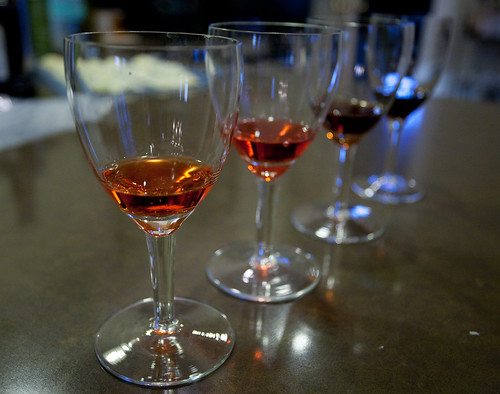Italian Amaros: A "Healthy" After Dinner Drink!
While Italian pre-dinner drinks, aperitivos, have been popular for many years, particularly the ubiquitous Aperol Spritz that has become a mainstay around the world as the ideal summer drink, the post-dinner selection has been limited.
Sambuca and dessert wine, primarily moscato, where the main Italian exports in this category for many years until a new crop of chefs, dedicated to bringing an authentic Italian experience abroad, started highlighting some of Italy’s most intriguing alcohol-based treasures: its amaros (bitters).

Usually when you thing of an alcoholic bitter, it’s those uber concentrated concoctions like Angostura bartenders add to drinks with pipettes looking a bit like a mad scientist playing in the kitchen.
Italy’s “bitters” are very different though. Rather than used for only a few drops as flavoring to other drinks, amaros are typically drunk on their own, often on the rocks, after dinner as a digestive because of their medicinal properties.
Amaro originated in monasteries and pharmacies as a medicinal drink, composed of a variety of (always secret to protect the long-researched recipe) herbs, roots, barks, and citrus peels soaked in alcohol or wine and aged.
Even today, many amaros trace their origins back to the 1800s, and have often been made continuously by the same family for hundreds of years.

Available in both Fernet Branca and Fernet Menta, Ferbet is commonly referred to as an acquired taste. One of the most strong, almost into the realm of pungent, amaros, Fernet is interestingly easy to find in the U.S., even though it can be hard to find people who appreciate it.
Made by the producers of the equally divine Grappa Nonino, Amaro Nonino is one of the smoothest amaros, flavored less with herbs than and more simply with the incredibly high quality of the grapes that make the base liquor. Though it is imported to the U.S., many places that stock it have a hard time keeping it on the shelves, as afficianados usually stock up whenever they see it.
Occasionally confused because of their similar labels—both a creamy yellow with old-fashioned drawings—Amaro Montenegro in its short, squat fiasco-like bottle and Amaro Lucano in its tall, elegant bottle are also similar tasting in that they are easy drinking amaros ideal for new amaro drinkers.
Sambuca and dessert wine, primarily moscato, where the main Italian exports in this category for many years until a new crop of chefs, dedicated to bringing an authentic Italian experience abroad, started highlighting some of Italy’s most intriguing alcohol-based treasures: its amaros (bitters).
What is an Italian Amaro?

Usually when you thing of an alcoholic bitter, it’s those uber concentrated concoctions like Angostura bartenders add to drinks with pipettes looking a bit like a mad scientist playing in the kitchen.
Italy’s “bitters” are very different though. Rather than used for only a few drops as flavoring to other drinks, amaros are typically drunk on their own, often on the rocks, after dinner as a digestive because of their medicinal properties.
Amaro originated in monasteries and pharmacies as a medicinal drink, composed of a variety of (always secret to protect the long-researched recipe) herbs, roots, barks, and citrus peels soaked in alcohol or wine and aged.
Even today, many amaros trace their origins back to the 1800s, and have often been made continuously by the same family for hundreds of years.
The Most Popular Italian Amaros

Fernet:
Available in both Fernet Branca and Fernet Menta, Ferbet is commonly referred to as an acquired taste. One of the most strong, almost into the realm of pungent, amaros, Fernet is interestingly easy to find in the U.S., even though it can be hard to find people who appreciate it.
Amaro Nonino:
Made by the producers of the equally divine Grappa Nonino, Amaro Nonino is one of the smoothest amaros, flavored less with herbs than and more simply with the incredibly high quality of the grapes that make the base liquor. Though it is imported to the U.S., many places that stock it have a hard time keeping it on the shelves, as afficianados usually stock up whenever they see it.
Amaro Lucano & Amaro Montenegro:
Occasionally confused because of their similar labels—both a creamy yellow with old-fashioned drawings—Amaro Montenegro in its short, squat fiasco-like bottle and Amaro Lucano in its tall, elegant bottle are also similar tasting in that they are easy drinking amaros ideal for new amaro drinkers.




















